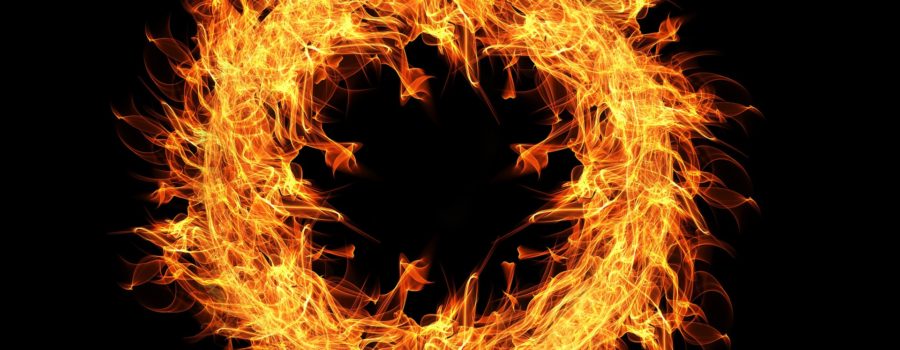In the stick of Joseph, we are told that the “course of YHWH is one eternal round” (1 Nefi 3:5, Alma 5:5 and 17:8). This phrase has presented a mystery for many readers, but this idea is not foreign to Jewish thought and has its equivalent in the Rabbinic Jewish literature.
It is no surprise, then, that Nefi introduces the statement by saying “the mysteries of Elohim shall be unfolded” (1 Nefi 3:5).
There is a parallel statement in the Sefer Yetzirah (Book of Formation), which is believed to be the oldest extant book of Jewish mysticism:
עשר ספירות בלימה נעוץ סופן בתחלתן ותחלתן בסופן כשלהבת קשורה בנחלת שאדון יחיד ואין לו שני ולפני אחד מה אתה סופר
“Ten Sefirot of Nothingness. Their end is imbedded in their beginning and their beginning in their end, like a flame in a burning coal. For Adon is singular, He has no second. And before one, what do you count?” ( Sefer Yetzirah 1:7)
In Jewish mysticism the ten Sefirot are ten emanations, or attributes, through which Ein Sof (The Infinite One) manifests Himself in the universe. The Zohar teaches concerning YHWH and His Sefirot, which it calls “crowns”, that “He is they and they are He” “like the flame and the coal” referring back to this passage from the Sefer Yetzirah:
The Holy One, blessed be He, has produced ten holy crowns above wherewith He crowns and invests Himself, and He is they and they are He, being linked together like the flame and the coal. (Zohar 3:70b)
Since the Sefirot are He and He is the Sefirot, the Sefer Yetzirah, in light of the Zohar, is saying that YHWH’s end is imbedded in His beginning and His beginning is imbedded in His end. That is to say, as Nefi writes, “the course of YHWH is one eternal round” and “like the flame and the coal”.
Gershom Scholem comments on this passage in the Zohar saying:
“Most of the early kabbalists were more inclined to accept the view that the Sefirot were actually identical with God’s substance or essence. This is stated in many documents from the 13th century, and stressed later in the school of R. Solomon b. Adret, and particularly in the Ma’arekhet ha-Elohut, which was followed in the 16th century by David Messer Leon, Meir ibn Gabbai, and Joseph Caro. According to this view, the Sefirot do not constitute “intermediary beings” but are God Himself. “The Emanation is the Divinity,” while Ein-Sof cannot be subject to religious investigation, which can conceive of God only in His external aspect. The main part of the Zohar also tends largely toward this opinion, expressing it emphatically in the interchangeable identity of God with His Names or His Powers: “He is They, and They are He” (Zohar, 3, 11b, 70a).” (Kabbalah; Gersom Scholem; p. 101)
Aryeh Kaplan explains this passage of the Sefer Yetzirah as follows:
The Sepher Yetzirah likens this to a “flame bound to a burning coal”. A flame cannot exist without the coal, and the burning coal cannot exist without the flame. Although the coal is the cause of the flame, the flame is also the cause of the burning coal. Without the flame there would not be a burning coal. Since cause cannot exist without effect, effect is also the cause of cause.” (Sefer Yetzirah, the Book of Creation; Aryeh Kaplan, p. 57)
When the Stick of Joseph states that “the course of YHWH is one eternal round,” it is actually expressing a very deep concept of Jewish mysticism, as found also in the Sefer Yetzirah and the Zohar. This notion of “one eternal round,” whether found in later Jewish mysticism, or the earlier Stick of Joseph, clearly hails from even earlier Jewish sources and provides convincing evidence that the Stick of Joseph is an authentic Jewish record.



2 Comments
Leave your reply.